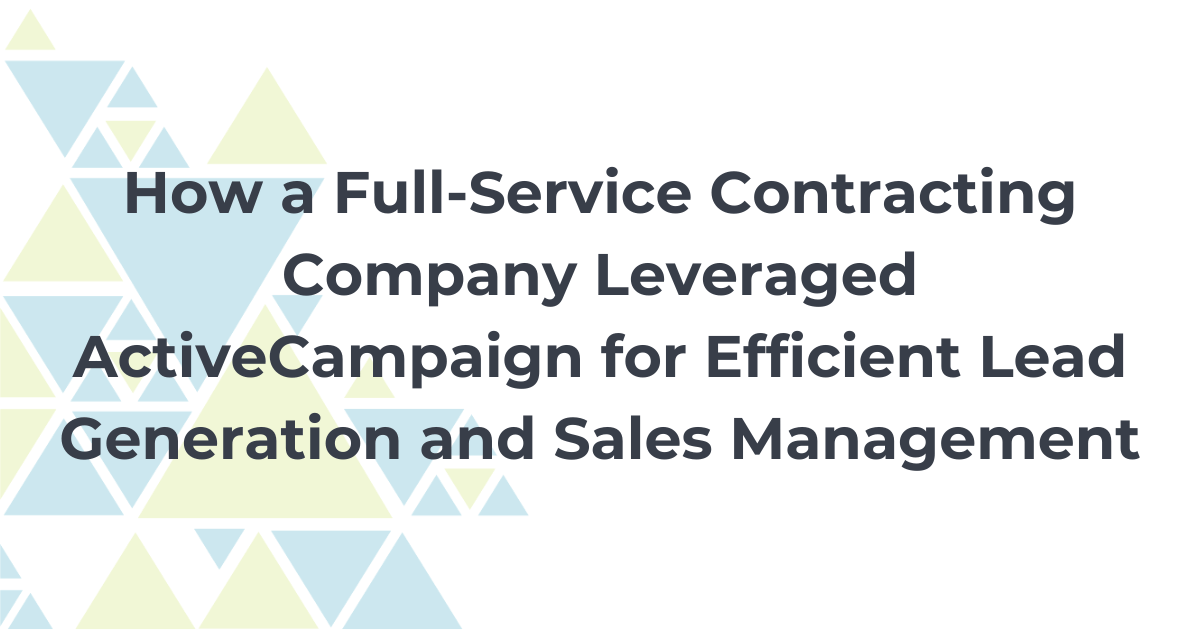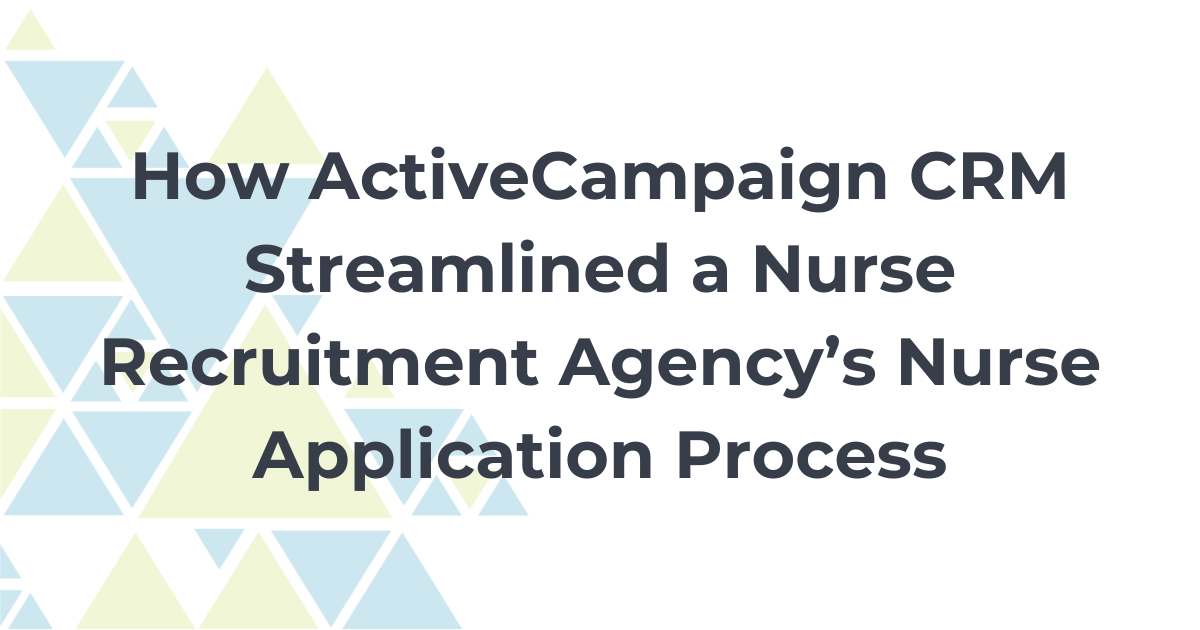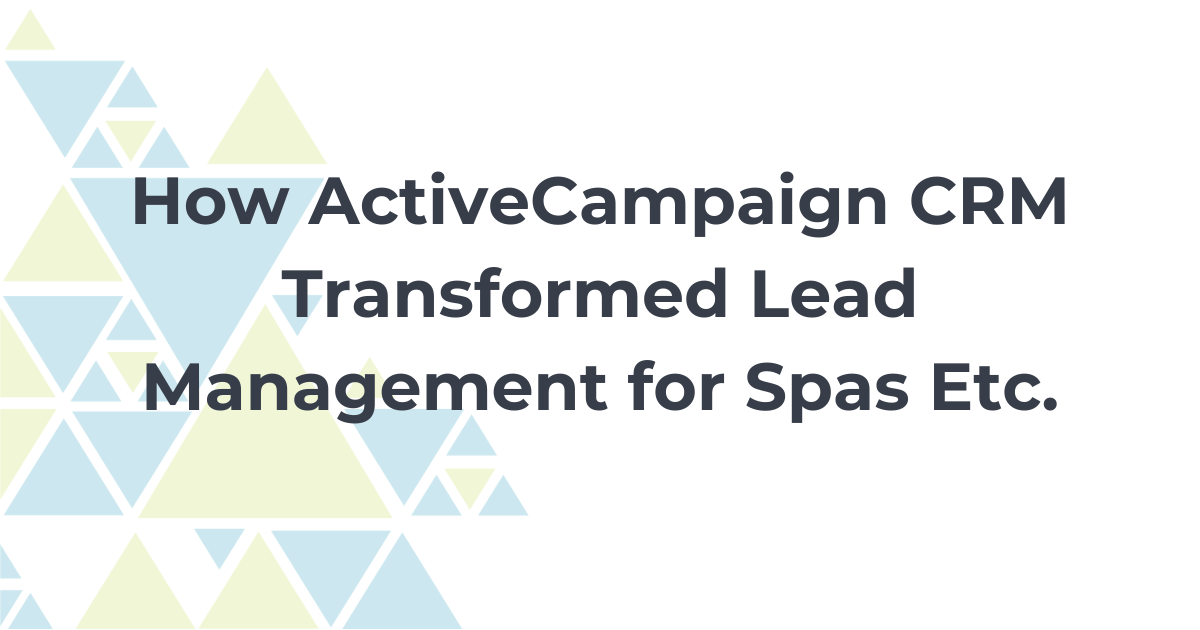The demand for robust and versatile tools is paramount in a business world powered by digitalization and customer-centric trends. Whether running a small business or steering a medium-sized enterprise, managing your sales and marketing efforts efficiently can significantly impact your growth. This is where ActiveCampaign CRM steps into the frame.
Revolutionizing Sales and Marketing Efforts
ActiveCampaign CRM is not merely a tool – it’s a powerhouse designed to revolutionize your sales and marketing efforts. By integrating seamlessly with your workflows, this platform deeply delves into your business’s heart. It provides a level of automation and connectivity that makes managing your entire sales process possible and remarkably efficient.
Unlocking Potential for Small and Medium-Sized Businesses
What sets ActiveCampaign CRM apart is its innate capacity to level the playing field for small and medium-sized businesses. Offering powerful features at accessible prices helps these businesses compete with larger counterparts, opening up a world of opportunities. Whether you are looking to streamline your sales cycle, ramp up your marketing automation, or manage contact details more efficiently, ActiveCampaign CRM has got you covered.
Sailing Smoothly through Sales and Marketing Automation
Imagine having a sales team that never sleeps or a marketing department that can personalize content at the drop of a hat. With ActiveCampaign CRM, this is no longer the stuff of dreams. This platform helps automate tasks and enables you to track interactions with your customers at every stage of their journey. It’s like having a powerful assistant there 24/7, ready to pitch in and push your business to new heights.
Stay with me as we dive deep into the world of ActiveCampaign CRM.
Core Features of ActiveCampaign CRM
ActiveCampaign CRM has impressive features to streamline your sales and marketing efforts. Let’s delve into these core functionalities and discover how they can transform your business operations.
Contact Management: Your Organizational Power Tool
Contact management in ActiveCampaign CRM is like having a well-organized, always-up-to-date digital Rolodex. With easy access to contact details, you can store and manage information efficiently, aiding the entire sales process. Every contact counts, whether it’s a new lead or an existing customer. ActiveCampaign CRM ensures you never miss an opportunity to connect and engage with your audience.
Sales Automation: Boosting Efficiency in the Sales Process
Sales automation is a game-changer. ActiveCampaign CRM leverages advanced technology to automate tasks, freeing your sales team to focus on what they do best – sell. The platform handles many tasks, from creating deals to assigning tasks and scoring leads, simplifying the sales process. The result? A smoother, faster sales cycle that can improve your bottom line.
Marketing Automation: Supercharging Your Marketing Efforts
Elevate your marketing efforts with ActiveCampaign CRM’s powerful marketing automation tools. The platform covers all bases, from sending targeted email marketing campaigns to automated segmentation based on user behavior. ActiveCampaign CRM gives you the flexibility and power to reach the right customer with the right message at the right time, making marketing easier and more effective.
CRM Tools: An Arsenal to Amplify Your Sales
ActiveCampaign CRM comes with a suite of CRM tools designed to enhance the sales cycle. Create deals, score leads, manage sales pipelines, and more with just a few clicks. With the ability to track interaction and automate tasks, the platform ensures that no potential sale falls through the cracks. Plus, with detailed reporting features, sales managers can stay on top of performance and make data-driven decisions.
Seamless Integrations: A Symphony of Digital Tools
The beauty of ActiveCampaign CRM lies not only in its standalone features but also in how it integrates with other platforms. Connect seamlessly with ecommerce platforms, enhancing the customer experience and streamlining the sales process. Moreover, the platform’s native integrations with software like Microsoft Dynamics, Salesforce, and Gmail mean you have all your essential tools in one place, making it easier to manage your business.
How ActiveCampaign CRM Streamlines the Sales Process
ActiveCampaign CRM is more than just a tool – it’s a complete system designed to optimize and streamline your sales process from start to finish. Let’s see how it takes the guesswork out of sales and replaces it with a strategic and efficient approach.
Demystifying the Sales Funnel
In the complex world of sales, the sales funnel serves as a roadmap, guiding leads from the first point of contact to the final sale. ActiveCampaign CRM helps to demystify this funnel by providing clear, trackable stages for each lead. From initial awareness to the final decision, every stage is mapped out clearly, enabling your sales team to engage leads at the right time with the right approach.
Managing Sales Pipelines Effectively
Effective sales pipeline management is crucial to closing deals. ActiveCampaign CRM shines in this area with its intuitive interface and automated processes. Track the status of each deal, assign tasks, and get an at-a-glance view of your pipeline’s health. Having a clear overview of your pipeline lets you prioritize deals, forecast sales, and spot potential issues before they become problems.
Tracking Interactions for Informed Decisions
Understanding your customers is crucial to successful sales. ActiveCampaign CRM’s event tracking feature enables you to capture and analyze customer interactions, providing valuable insights into customer behavior. This could be anything from a website visit to a purchase or an unanswered email. By tracking these interactions, your sales team can make informed decisions, tailor their approach, and close deals more effectively.
Automating Tasks for Increased Efficiency
Sales is a dynamic process that often involves a lot of manual work. However, with ActiveCampaign CRM, you can automate various tasks, freeing up your sales team to focus on creating and nurturing customer relationships. From sending follow-up emails to scoring leads and creating deals, the platform’s sales automations can help streamline your entire sales process.
Case Study: CRM Implementation
There’s nothing like a real-world example demonstrating ActiveCampaign CRM’s power. The following case studies showcase the ActiveCampaign CRM as a core component for lead management.
How an Online Influencer Improved Sales Team Efficiency
A purpose-driven entrepreneur, online influencer, affiliate marketer, author, speaker, and top-100 podcast host, sought to create a streamlined sales process for a 6-month coaching program using a custom build ActiveCampaign CRM pipeline. This project included:
- Solution Implementation: The entrepreneur implemented a custom-built ActiveCampaign CRM pipeline to streamline the sales process for a 6-month coaching program. This included migrating from ConvertKit to ActiveCampaign, redefining the customer journey, and designing a new CRM for the sales team.
- Improved Communication: The redefined customer journey resulted in improved communications, ensuring the right message was delivered at the right time to the audience. This was a significant improvement over the previous system.
- Smooth Migration: The migration from ConvertKit to ActiveCampaign was executed with zero downtime, ensuring no impact on existing audiences. This was crucial to maintain the continuity of the business operations.
- Efficient Workflow: The new CRM system streamlined the workflow within the sales team, making the sales process more efficient and effective.
- Positive Impact: Implementing the new CRM system led to a clear sales pipeline for new leads, a more delightful customer experience, and a confident internal team. The team understood the setup, how it operated, and how to track their leads to close more sales.
Continue reading this case study >>
How a Medical Cost-Sharing Company Leveraged ActiveCampaign to Create a Centralized Customer Data Hub
A rising medical cost-sharing company sought to redesign its existing, very complex customer journey workflows and system infrastructure to create a simple system that could be maintained and managed in-house. Here is what we did:
- Solution Implementation: Redesigned a complex customer journey workflow and system infrastructure to create a simple, in-house, manageable system. This involved designing sales, customer service, and customer ascension workflows using ActiveCampaign.
- Cost and Time Efficiency: The new streamlined system approach saved the company $100K annually. It also reduced the time spent on manual sales and marketing tasks by over 20%, enhancing operational efficiency.
- Sales Lead Recovery: The efficient system helped recover over $5M in “lost” and stalled sales leads that were previously overlooked due to the inefficiency of the existing system.
- Reduced Technology Costs: The newly designed system eliminated the need for a full-time systems manager and high-cost technology, resulting in significant savings for the company.
- Positive Impact: Implementing the new system led to a clear sales pipeline for new leads, a more delightful customer experience, and a confident internal team. The team understood the setup, how it operated, and what to do if a problem arose, allowing them to self-support the system internally.
Continue reading this case study >>
ActiveCampaign CRM’s implementation positively changed sales and marketing processes. The client experienced a more streamlined sales cycle, improved marketing efforts, better contact management, and increased efficiency. These case studies demonstrate how ActiveCampaign CRM can transform business operations.
The Value of ActiveCampaign CRM to Your Sales and Marketing Efforts
In today’s fast-paced, customer-centric world, leveraging the right tools can mean the difference between business growth and stagnation. ActiveCampaign CRM brings many benefits that can power up your sales and marketing efforts.
Supporting Customer Acquisition and Relationship Management
ActiveCampaign CRM is designed to attract new customers and nurture and grow existing customer relationships. Its powerful features provide your sales and marketing teams with valuable insights, helping you understand your customers’ needs and preferences. This enables you to engage with them meaningfully, fostering loyalty and promoting long-term business growth.
Enhancing Team Collaboration with User Permissions
One of the challenges businesses often face is coordinating efforts across different teams and roles. ActiveCampaign CRM’s user permissions feature enables you to assign tasks, set access levels, and ensure everyone is on the same page. The platform empowers your team to work together effectively by facilitating seamless collaboration, enhancing productivity, and driving better results.
Empowering Sales Managers with Robust Reporting
For sales managers, having a clear, real-time overview of sales activities is crucial. ActiveCampaign CRM offers robust reporting features, allowing managers to track sales pipelines, monitor team performance, and analyze customer interaction data. This helps them make data-driven decisions, improving sales strategies and team performance.
Integrating Seamlessly with Other Tools
ActiveCampaign CRM works wonders and integrates smoothly with other tools you may be using, such as ecommerce platforms and email services. This means all your valuable data is collected in one place, streamlining your workflows and saving time and effort.
In the realm of sales and marketing, ActiveCampaign CRM stands as a powerful ally, offering features and benefits designed to boost your efficiency and effectiveness. With this platform, you can be confident that you have the right tool to manage your entire sales process, from lead acquisition to customer retention.
ActiveCampaign Plans and Pricing
Selecting the right CRM for your business is a crucial decision, and cost plays a significant role in this choice. ActiveCampaign CRM offers a range of plans suited to different business sizes and needs, ensuring you get value for your investment.
A Range of Plans to Suit Every Business
From small businesses just getting started with CRM to larger enterprises looking for a comprehensive solution, ActiveCampaign CRM has a plan for you. The platform offers tiered pricing, meaning you can choose the level of service that best matches your business needs and budget.
Affordable Pricing, Powerful Features
Despite its affordability, ActiveCampaign CRM doesn’t compromise on the quality or range of features offered. Every plan has powerful tools to boost your sales and marketing efforts, from contact management and sales automation to email marketing and integrations.
A Free Plan to Get Started
For those who are new to CRM or have a limited budget, ActiveCampaign CRM offers a free trial. This provides a great opportunity to explore the platform’s core features without committing financially.
Enterprise Plans for Advanced Needs
For businesses with more advanced needs, ActiveCampaign CRM offers enterprise plans with more sophisticated features like advanced reporting, one-on-one training, and a custom mailserver domain. This ensures that ActiveCampaign CRM can scale with you as your business grows.
In the world of CRM, ActiveCampaign stands out with its affordable pricing and robust features. Whether you’re a small business or a growing enterprise, this platform provides an effective solution that won’t break the bank.
Conclusion
In an increasingly digital and customer-centric landscape, choosing the right tools to support your business growth is more crucial than ever. ActiveCampaign CRM, with its powerful features and affordable pricing, emerges as a frontrunner in this space.
Whether you’re a small business aiming to streamline your sales process or a medium-sized enterprise looking to supercharge your marketing efforts, ActiveCampaign CRM offers a solution tailored to your needs. From managing contact details to automating tasks and tracking customer interactions, this platform supports every stage of your sales cycle.
Not only does ActiveCampaign CRM offer a comprehensive suite of CRM tools, but its integration capabilities also mean it works seamlessly with your existing workflows and platforms. Its value in enhancing team collaboration and providing robust reporting tools makes it a solid investment for any business.
In the realm of CRM, ActiveCampaign stands out as a versatile, user-friendly, and powerful tool that can transform your sales and marketing efforts. So why wait? Take the first step towards revolutionizing your business operations, and start your journey with ActiveCampaign CRM today.



